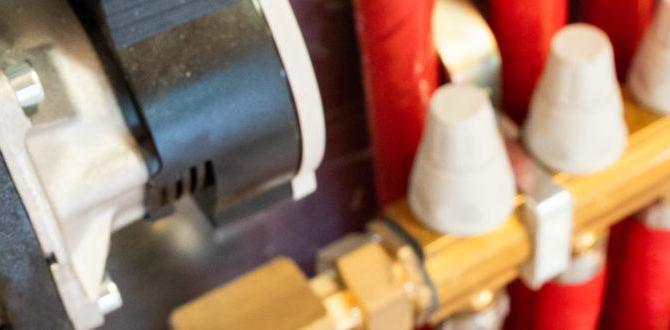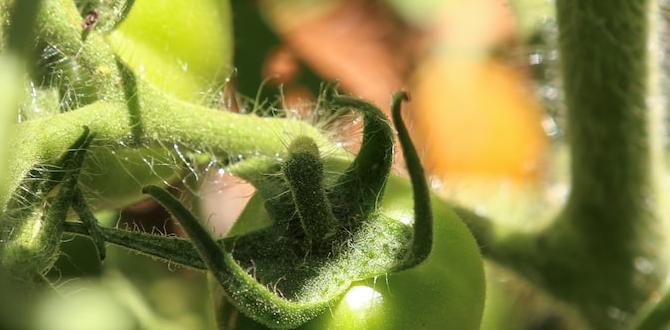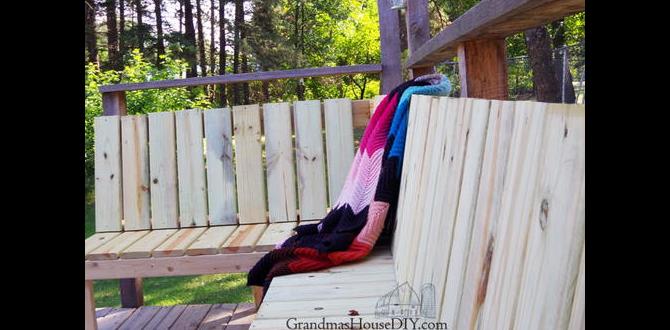Choosing between garden compost and fertilizer is a crucial decision for any gardener looking to boost plant health. Compost is a natural soil amendment that improves structure and feeds microbes, while fertilizers provide concentrated nutrients. For sustainable, long-term soil health and vibrant plants, compost is often the superior choice, though fertilizers can offer quick boosts when needed. Understanding their differences empowers you to make the best decision for your garden.
Welcome to EcoPatchy! As a fellow plant lover, I know how exciting it is to get your hands dirty and watch things grow. One of the biggest questions new gardeners ask is about feeding their plants. You might have heard about compost and fertilizers, and perhaps you’re wondering which one is best for your little green friends. It’s a common confusion, and the good news is, it doesn’t have to be complicated! This guide will break down garden compost vs. fertilizer in simple terms, so you can feel confident choosing the right one to make your plants happy and healthy. We’ll dig into what each one is, how they work, and when to use them. Let’s get started on this journey to a greener garden!
Garden Compost vs. Fertilizer: What’s the Difference?
Understanding the core differences between garden compost and fertilizer is the first step to making an informed choice for your plants. They both aim to provide what plants need to thrive, but they do so in fundamentally different ways.
What is Garden Compost?
Think of compost as “black gold” for your garden. It’s not just dirt; it’s decomposed organic matter. This can include kitchen scraps (like fruit and vegetable peels, coffee grounds, and eggshells), yard waste (like leaves, grass clippings, and small twigs), and even shredded newspaper. When these materials break down over time, with the help of microorganisms, they transform into a rich, dark, crumbly substance:
- Natural and Organic: Compost is made from things that were once alive.
- Soil Amendment: It’s primarily used to improve the soil itself.
- Slow-Release Nutrients: It provides nutrients gradually as plants need them.
- Benefits Soil Structure: It helps sandy soil retain moisture and allows clay soil to drain better.
- Boosts Soil Life: It encourages beneficial bacteria, fungi, and worms, which are essential for healthy soil.
Composting is a fantastic way to reduce waste and create a nutrient-rich food for your garden. You can buy compost, but many people love the process of making their own!
What is Fertilizer?
Fertilizers, on the other hand, are designed to provide specific nutrients to plants, often in a concentrated form. They can be synthetic (man-made) or organic (derived from natural sources). Fertilizers are like supplements for your plants, giving them a direct boost of essential elements.
- Nutrient Concentrates: Fertilizers deliver readily available nutrients like Nitrogen (N), Phosphorus (P), and Potassium (K) – often seen on packaging as an N-P-K ratio.
- Quick Action: They can often provide nutrients to plants much faster than compost.
- Specific Needs: They can be chosen to address particular nutrient deficiencies or plant requirements.
- Can Be Synthetic or Organic: Synthetic fertilizers are chemically manufactured, while organic fertilizers come from sources like bone meal, fish emulsion, or manure.
While fertilizers are effective, they don’t improve the soil structure in the way compost does. It’s like giving your plant a vitamin pill versus giving it a balanced meal that also nourishes the ground it grows in.
The Mechanics: How They Work in Your Garden
Understanding how compost and fertilizer interact with your soil and plants helps clarify their roles.
How Compost Works: The Soil’s Best Friend
Compost works its magic by improving the overall health and structure of your soil. When you add compost, you’re not just adding food for plants; you’re feeding the soil itself. This process:
- Improves Water Retention: Compost acts like a sponge, helping your soil hold onto precious moisture. This means you might need to water less often, especially in hot weather.
- Enhances Drainage: For heavy clay soils, compost lightens them up, allowing excess water to drain away and preventing roots from becoming waterlogged.
- Aerates the Soil: It creates tiny air pockets, which are vital for plant roots to breathe and for beneficial soil organisms to thrive.
- Feeds Soil Microbes: Compost is teeming with life! It supports a healthy ecosystem of bacteria, fungi, and earthworms. These tiny helpers break down organic matter further, making nutrients available to your plants over time and protecting them from some diseases.
- Gradual Nutrient Release: As the organic matter in compost continues to break down, it slowly releases a balanced range of micronutrients that plants can absorb.
Think of compost as building a strong foundation for your plants. A healthy soil environment leads to healthier, more resilient plants in the long run.
How Fertilizer Works: The Quick Boost
Fertilizers work by directly supplying essential plant nutrients, primarily Nitrogen (N), Phosphorus (P), and Potassium (K). These are the macronutrients plants need in the largest amounts for growth, flowering, and fruiting.
- Direct Nutrient Uptake: When applied, these nutrients become soluble in water and are quickly absorbed by plant roots.
- Targeted Nutrition: Different fertilizers have varying N-P-K ratios and added micronutrients, allowing you to tailor them to specific plant needs. For example, a fertilizer with a higher phosphorus content might be used to encourage blooming.
- Fast Results: Because the nutrients are readily available, you often see a quick response in plant growth or color.
However, fertilizers don’t typically improve soil structure. Over-reliance on synthetic fertilizers can sometimes lead to imbalances in the soil ecosystem and can be washed away by rain, potentially polluting waterways. This is why many gardeners prefer to use them judiciously and in conjunction with soil-building practices.
Garden Compost Vs. Fertilizer: Pros and Cons
To help you decide, let’s look at the advantages and disadvantages of each:
Garden Compost: The Advantages and Disadvantages
Advantages:
- Improves Soil Structure: Makes soil lighter, airier, and better at holding moisture.
- Feeds Soil Life: Encourages beneficial microorganisms and earthworms.
- Slow-Release Nutrients: Provides a steady, balanced supply of nutrients over time.
- Environmentally Friendly: Diverts waste from landfills and reduces the need for chemical inputs.
- Cost-Effective: Can be made at home for free or purchased in bulk.
- Reduces Erosion: Helps bind soil particles together.
Disadvantages:
- Nutrient Content Varies: It’s hard to know the exact nutrient analysis.
- Takes Time to Make: Composting can take several months to over a year.
- Can Be Bulky: Requires significant amounts to amend large areas.
- May Introduce Weed Seeds: If not composted at the right temperature, some weed seeds might survive.
Fertilizer: The Advantages and Disadvantages
Advantages:
- Targeted Nutrients: Delivers specific nutrients needed for plant growth.
- Fast-Acting: Provides quick results for struggling plants or specific growth phases.
- Predictable Analysis: N-P-K ratios are clearly labeled for precise application.
- Convenient: Easy to buy and apply in small or large quantities.
Disadvantages:
- Does Not Improve Soil Structure: Can lead to compacted or depleted soil over time.
- Risk of Over-fertilizing: Can burn plant roots or lead to weak, leggy growth.
- Environmental Concerns: Synthetic fertilizers can leach into water systems.
- Cost: Can become expensive, especially for regular use.
- Can Harm Soil Microbes: Some synthetic options can disrupt the natural soil ecosystem.
When to Use Garden Compost
Compost is a fantastic all-around performer and is beneficial in almost any gardening situation. It’s particularly excellent for:
- Establishing New Gardens: Mix a generous amount into garden beds before planting to create a rich, inviting environment for new roots.
- Amending Soil Annually: Apply a layer of compost each spring or fall to maintain soil health and replenish nutrients.
- Container Gardening: It’s a staple ingredient for healthy potting mixes, improving aeration and water retention in pots.
- Vegetable Gardens: Especially useful for boosting the productivity and health of plants that produce fruits and vegetables.
- Improving Poor Soil: If you have sandy, compacted, or depleted soil, compost is your best friend for transformation.
- Lawns: Top-dressing your lawn with compost in spring and fall can significantly improve turf health.
For a comprehensive guide on composting, check out the EPA’s composting page. It offers valuable insights into starting your own compost bin!
When to Use Fertilizer
Fertilizer is best used when you need a targeted nutrient boost or are dealing with specific plant issues. Consider using fertilizer:
- For Deficiencies: If your plants show signs of nutrient deficiency (e.g., yellowing leaves without a clear cause), a soil test can help pinpoint what’s missing, and a fertilizer can fix it. You can get a soil test kit from most garden centers or send a sample to a local Cooperative Extension.
- During High-Demand Periods: Some plants, like heavy-feeding vegetables (tomatoes, corn, squash) or flowering plants, benefit from supplemental feeding during their peak growth or blooming stages.
- In Hydroponic Systems: Hydroponics relies entirely on nutrient solutions, which are a form of fertilizer.
- Quick Fixes: If a plant is looking very lackluster and you need a rapid improvement, a liquid fertilizer can offer a fast, albeit temporary, solution.
- Specific Plant Needs: Some plants, like acid-loving blueberries or azaleas, may require specialized fertilizers formulated for their pH and nutrient requirements.
Making the Choice: A Practical Guide
So, the big question: garden compost vs. fertilizer, which is the essential choice? For most home gardeners aiming for sustainable, healthy, and resilient gardens, compost is the foundational choice. It builds soil over time, creating a living ecosystem that supports plant life naturally.
However, fertilizers have their place. They are excellent tools for specific purposes:
Think of it this way:
- Compost is like a balanced, healthy diet with all the vitamins and minerals your body needs to be strong from the inside out.
- Fertilizer is like a specific supplement you might take when you’re feeling a bit run down or need extra help with something specific, like boosting your immune system.
Here’s a way to visualize it:
| Feature | Garden Compost | Fertilizer |
|---|---|---|
| Primary Function | Soil amendment, improves soil health and structure | Supplies specific essential nutrients |
| Nutrient Delivery | Slow-release, balanced micronutrients | Fast-acting, concentrated macronutrients (N-P-K) |
| Impact on Soil | Builds beneficial microbial life, improves aeration, water retention, and drainage | Does not significantly improve soil structure; can lead to depletion if used exclusively |
| Sustainability | Highly sustainable, reduces waste, supports natural cycles | Can be less sustainable, especially synthetic types; risk of pollution |
| Best For | Improving soil quality, long-term plant health, organic gardening | Addressing specific nutrient deficiencies, quick fixes, high-demand periods |
| Considerations | Nutrient content varies, takes time to produce | Risk of over-fertilizing, can harm soil microbes, cost |
A Balanced Approach: Combining Compost and Fertilizer
The most effective approach for many gardeners is to use both compost and fertilizer strategically. This hybrid method offers the best of both worlds:
- Start with Compost: Always begin by incorporating plenty of compost into your soil. This creates a robust foundation for healthy growth. Spread a few inches of compost over your garden beds and mix it in.
- Supplement with Fertilizer (When Needed): Use fertilizers to address specific plant needs or for plants with very high nutrient demands during critical growth phases. For example, if your tomato plants are flowering but not setting fruit, a fertilizer with a higher phosphorus content might help.
- Observe Your Plants: Pay attention to how your plants look. Are they vibrant green? Are they growing well? Are they flowering or producing fruit? Your plants will often tell you if they need a little extra something.
- Consider Organic Fertilizers: If you prefer to stick to more natural options, opt for organic fertilizers derived from sources like manure, bone meal, fish emulsion, or worm castings. These provide nutrients more slowly and are generally gentler on soil life than synthetic options.
For instance, if you’re growing a vegetable garden, you might amend the entire bed with compost in the spring. Then, when your pepper plants start to flower, you could apply a side-dressing of compost or a balanced organic fertilizer to give them an extra boost.
DIY Compost and Organic Fertilizers
Getting hands-on can save you money and give you a deeper connection to your garden.
Making Your Own Compost
It’s easier than you think! You’ll need:
- A compost bin (you can build one from wood pallets, buy one, or even just use a pile).
- “Greens” (nitrogen-rich materials like kitchen scraps, grass clippings) and “Browns” (carbon-rich materials like dry leaves, shredded paper, twigs). Aim for a good mix!
- Water (to keep it moist, like a wrung-out sponge).
- Air (turn your pile occasionally).
Be patient! It takes time for organic matter to break down into usable compost.
Easy Organic Fertilizers to Make or Buy
- Worm Castings: The “poop” from earthworms is incredibly rich in nutrients and beneficial microbes. You can buy it or start your own worm farm (vermiculture)!
- Compost Tea: A liquid “brew” made by steeping compost in water. It’s a wonderful foliar feed and soil drench that introduces beneficial microbes and nutrients.
- Manure: Well-rotted manure from herbivores (like cows, horses, chickens) is a good source of nitrogen. “Well-rotted” is key to avoid burning plants. Never use fresh manure directly in the garden.
- Banana Peels: Rich in potassium, they can be chopped and buried around plants, added to compost, or steeped in water to make a sort of tea.
- Coffee Grounds: A good source of nitrogen and organic matter. Use them in moderation, as they can be acidic.
Remember, even organic fertilizers should be used according to plant needs and their specific instructions to avoid over-application.
Frequently Asked Questions (FAQs)
Q1: Can I just use compost and skip fertilizer altogether?
A1: For many gardens, yes! If you consistently amend your soil with good quality compost every season, your plants will likely get all the nutrients they need. Compost builds healthy soil, which is the best way to support plant growth naturally.
Q2: How much compost should I add to my garden?
A2: A good rule of thumb is to add 2-4 inches of compost to new garden beds and work it into the top 6-8 inches of soil. For established gardens, apply a 1-2 inch layer as a top dressing in the spring or fall.
Q3: Are synthetic fertilizers bad for the environment?
A3: Synthetic fertilizers can be problematic. When they aren’t absorbed by plants, they can be washed away by rain into rivers and oceans, causing pollution and harming aquatic life (a process called eutrophication). They can also disrupt the natural balance of soil microbes.





